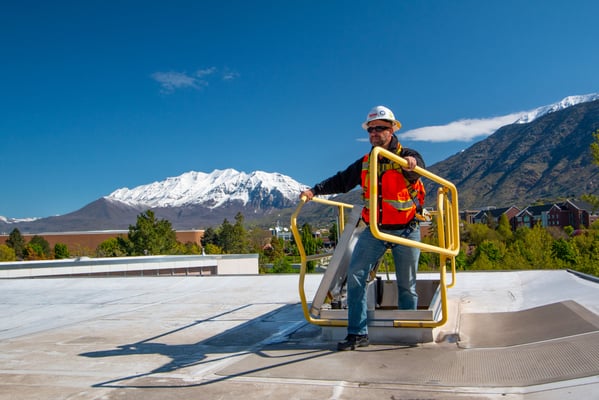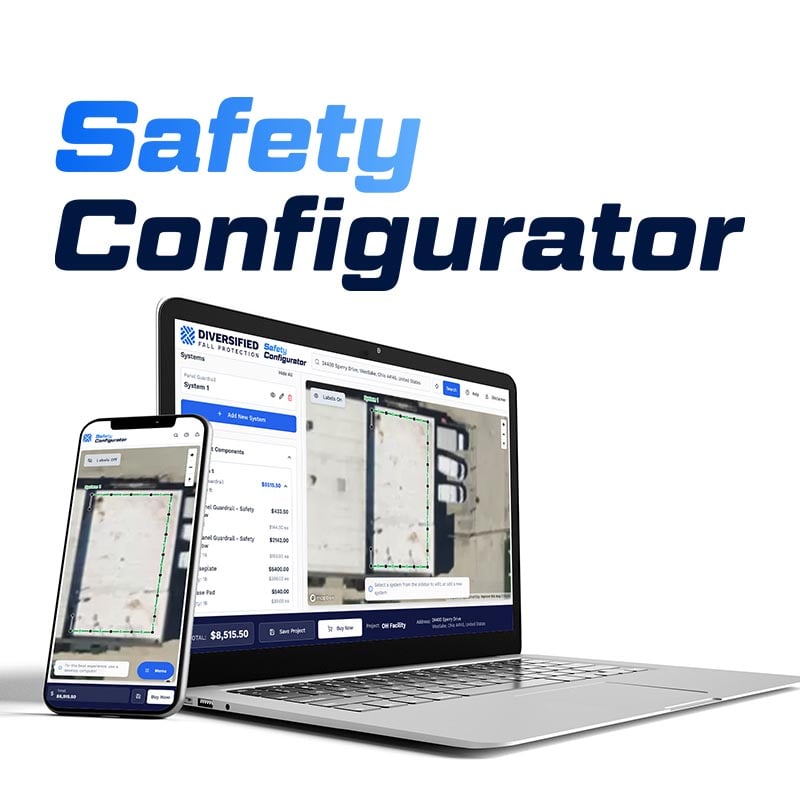
Top 4 Ways Superintendents Can Eliminate Fall Hazards
Falls from elevation continue to be a leading cause of death and injury in the construction industry. Despite advancements in safety equipment and training, fall hazards persist, posing a significant risk to workers on construction sites. Therefore, superintendents must remain vigilant and committed to implementing effective safety measures to minimize the potential for falls. The following are the top four fall prevention strategies that can help to eliminate fall hazards on a jobsite, as well as improve OSHA compliance.
1. Prevent unauthorized roof access
Limiting unauthorized access to rooftops is a critical first step in reducing fall hazards. Unauthorized personnel may lack the necessary safety training and awareness, putting themselves and others at risk. To prevent unauthorized roof access, consider the following strategies:
Implement a controlled-access system
Establish a controlled-access system that requires workers to obtain permission before accessing the roof. This may include a sign-in/sign-out sheet or an electronic access control system that records each worker’s entry and exit.
Secure ladders and stairs
Ensure ladders and stairs leading to the roof are secured to prevent unauthorized access. This may involve applying locks to doors and ladder access or removing portable ladders when not in use. However, when applying locks, ensure you are not preventing workers from exiting the area in an emergency situation.
Install warning signs
Display prominent warning signs at all roof access points, alerting workers to potential fall hazards and reminding them of the need for proper safety precautions. Always consider your workforce when making signs. For example, if a large percentage of your crew are native Spanish speakers, consider translating all signs into Spanish to ensure your entire crew gets the message.
Conduct regular inspections
Regularly inspect roof access points to ensure that unauthorized access measures listed above are in place and functioning correctly. Address any identified issues promptly to maintain the integrity of an access control system.
2. Choose the right fall protection system
Understanding the differences between active and passive fall protection systems is essential for selecting the most appropriate solution for a construction site. Both types of systems play a crucial role in fall hazard prevention, and choosing the right one depends on the specific work environment and tasks involved.
Active fall protection systems
Active fall protection systems require worker participation and typically include personal fall arrest systems, such as harnesses, lanyards and self-retracting lifelines. These systems provide workers with the necessary protection when working near open edges or other fall hazards. However, when it comes to fall protection, there is no-one-size-fits-all solution, which creates the possibility for potentially life-threatening user errors. Therefore, ensuring worker competence in using and maintaining active fall protection equipment is essential.
Passive fall protection systems
Passive fall protection systems do not require worker participation and include barriers, such as guardrails and safety nets, that prevent workers from reaching fall hazards. These systems are the most effective control measure for preventing falls because they protect without requiring workers to wear additional equipment or undergo specialized training.
To choose the most effective fall protection system, assess the specific hazards on your construction site and consider the tasks workers will perform. In some cases, a combination of active and passive systems may be necessary to provide the highest level of protection.
3. Pay attention to open roof hatches
Open roof hatches pose a significant fall hazard when left unattended or unprotected. To mitigate the risks associated with open roof hatches, implement the following best practices:
Install guardrails or covers
Superintendents can eliminate this fall hazard by ensuring all roof hatches have hatch covers that can support the total weight of a worker. However, this only works if those using the hatch remember to close it when done. Placing guardrails around roof hatches adds additional protection and can prevent workers from falling through if one is accidentally left open.
Implement warning systems
Use warning systems, such as signs or caution tape, to alert workers to the presence of open roof hatches. This will help ensure workers are aware of the hazard and take appropriate precautions.
Conduct regular inspections
Regularly inspect open roof hatches to ensure protective measures are in place and functioning correctly. Address any identified issues promptly to maintain a safe work environment.
4. Identify and protecting leading edges
Leading edges pose a significant fall threat for workers. Identifying and protecting these areas is crucial for maintaining a safe construction site. Consider the following strategies for addressing leading edges:
Conduct a hazard assessment
You can’t protect your crew from something you don’t know exists. That’s why performing a thorough hazard assessment to identify all leading edges on your construction site is the first step. Then, ensure that all workers are aware of these high-hazard areas and their associated risks.
Implement fall protection measures
Install appropriate fall protection measures, such as guardrails, safety nets or personal fall arrest systems, to protect workers near leading edges. Conduct regular inspections and maintenance of fall protection equipment to ensure they remain effective.
Provide worker training
High-quality training is one of the most powerful ways to protect your crew and create a safer and more compliant workplace. Ensure that workers receive adequate training in recognizing leading-edge hazards and using the appropriate fall protection measures. In addition, reinforce the importance of following safety procedures and reporting any hazards they encounter.
Eliminating building fall hazards requires ongoing commitment and continuous learning. By implementing these strategies, construction professionals can create a safer work environment and significantly reduce the risk of falls. Preventing unauthorized roof access, choosing the right fall protection system, paying attention to open roof hatches and identifying and protecting leading edges are all essential steps in maintaining a safe jobsite. In addition, by fostering a safety culture and prioritizing fall hazard prevention, superintendents can help ensure their crew returns home safely at the end of each day. If you have any questions about your fall protection application, feel free to contact us at Diversified Fall protection.
This article was originally published in Construction Superintendent on May 24, 2023
Schedule an assessment with Diversified Fall Protection
Contact Us to request a fall safety review

b-1.jpg?width=1368&height=1340&name=Rail%20(175)b-1.jpg)

